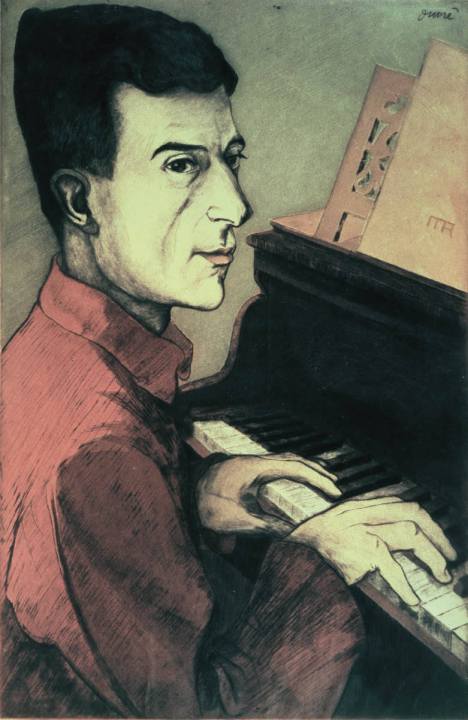For a composer who gave so much delight to so many, Ravel occupies a peculiar position in 20th-century music. Stravinsky’s famous description, ‘the most perfect of Swiss clockmakers’, still brings a chortle of recognition, though it might be better to think of him as a jeweller. In the words of one critic, writing in 1906, his music conceals tenderness ‘beneath a surface of flashing, kaleidoscopic precious stones’. Either way, he has probably been patronised by kind words more than any other great composer.
Some listeners, it is clear, never forgave him for not being Debussy. Even the famous piano concerto, premiered in 1932, five years before his death, was damned by Constant Lambert as being ‘in painfully good taste throughout’. Yet to hear that work now, when it is part of the standard repertoire, is to hear the clear voice of a master craftsman; one, admittedly, whose romantic leanings were mediated through a classical personality, but there is nothing unusual about that. Wasn’t Brahms described as a man who composed music out of a sense of regret that he hadn’t been born 20 years earlier? Ravel never sought to be another Debussy, who was, it must be acknowledged, the greater composer. As for Constant Lambert, where is he now?
Ravel was never shy of nailing his colours to the mast. Asked to comment on the future of the ballet, when the Ballets Russes had run its race, he thought that the art could have one ‘if there’s a return to the 18th century’. Fauré was his teacher, and Mozart his hero — you can hear it in the slow movement of the piano concerto — but this was no stick-in-the-mud, no matter what his contemporaries said about him. Perhaps the most stinging remark, or rebuke, came from Satie, who, on hearing that Ravel had turned down the légion d’honneur, said: ‘But all his music accepts it.’
Like all great artists, he defied easy categorisation. His music is so French you have only to close your eyes and you are there. Yet his father was Swiss, his mother an illegitimate Basque. Throughout his life Ravel returned to the Basque country, where he felt truly free. Musically he was a magpie. He borrowed from Spain in the ‘Boléro’, his masterpiece without music, from Hungary in the gypsy-flavoured ‘Tzigane’, and, most brilliantly, from Vienna in ‘La Valse’, where impressionism met expressionism in a post-war stramash. This dance of death, ‘a portrait of a ballet’, in Diaghilev’s dismissive phrase, is really a cubist waltz. A clockmaker indeed!
Small, dapper, content in his solitude, and lost without his cigarettes (he had their provision written into contracts), Ravel emerges as an attractive character. He never really grew up, carrying throughout his life a love of toys. Little wonder that his best-loved score is ‘Mother Goose’, in which he unlocks a gate into the kingdom of childhood. Here is Ravel in all his ravishment, and it would take a heart of flint not to respond. As we know, however, some people turn up their noses at beauty. Even in those days there were those who preferred to listen to the aridities of Schoenberg.
His relationship with Debussy never developed into friendship. Ravel attended the premiere of Pelléas et Mélisande in 1902, indeed he could never hear the opera often enough, and Debussy caught the rehearsal of the younger man’s string quartet two years later. But they were never close. With Vaughan Williams, however, Ravel established warm relations. The Englishman, who had studied with Ravel, even overlooked his tutor’s wonky piano playing on the first Paris performance of On Wenlock Edge. And in London, he discovered that Ravel loved steak and kidney pudding!
In the musical world Ravel is best-known for Daphnis et Chloé, a ballet that is more commonly performed in the concert hall, and an opera, L’enfant et les sortileges, that receives few productions. For those who are unfamiliar with his music, and would like to know more, a good starting-point is the piano trio of 1914. This is chamber music of freshness, sweetness, and, yes, charm. It does not yearn for the infinite. It does not plumb emotional depths. But it is great music, and the man who wrote it was a great composer.







Comments